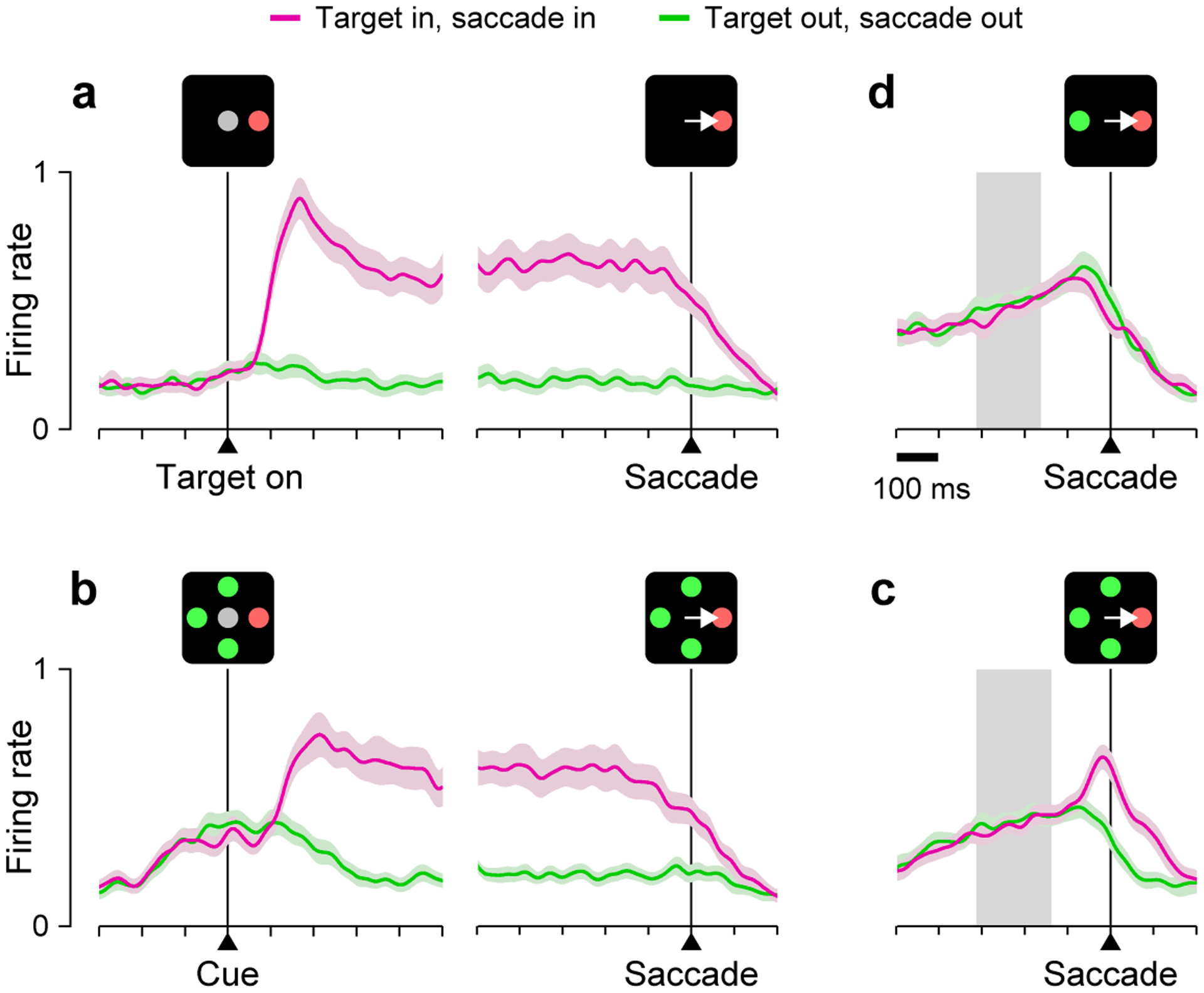Figure 4.

Visually driven activity in the FEF signals stimulus salience. Traces show normalized population activity from 40 FEF neurons classified as purely visual. Each panel corresponds to a different task, and compares activity for correct saccades into the response field (magenta) versus away (green). (a) Delayed saccade task. The onset of a lone target in the response field elicits a strong response that is sustained through a delay and starts decreasing just before the saccade. (b) Non-urgent oddball search task. The neurons respond briskly when the four stimuli change from gray to red or green (Cue). They signal the presence of a target (the oddball stimulus) in the response field almost as strongly as in a during the delay that follows the cue onset. (c) Urgent oddball search task. The neurons discriminate target versus distracter just prior to saccade onset. (d) Urgent color discrimination task. The target color is indicated at the beginning of each trial. When target and distracter are equally salient, the neurons do not differentiate, even though the monkeys’ performance is near 100% correct in the same trials. Gray shades in c, d, indicate the range of times at which targets and distracters were revealed. All plots are modified from [28*].
